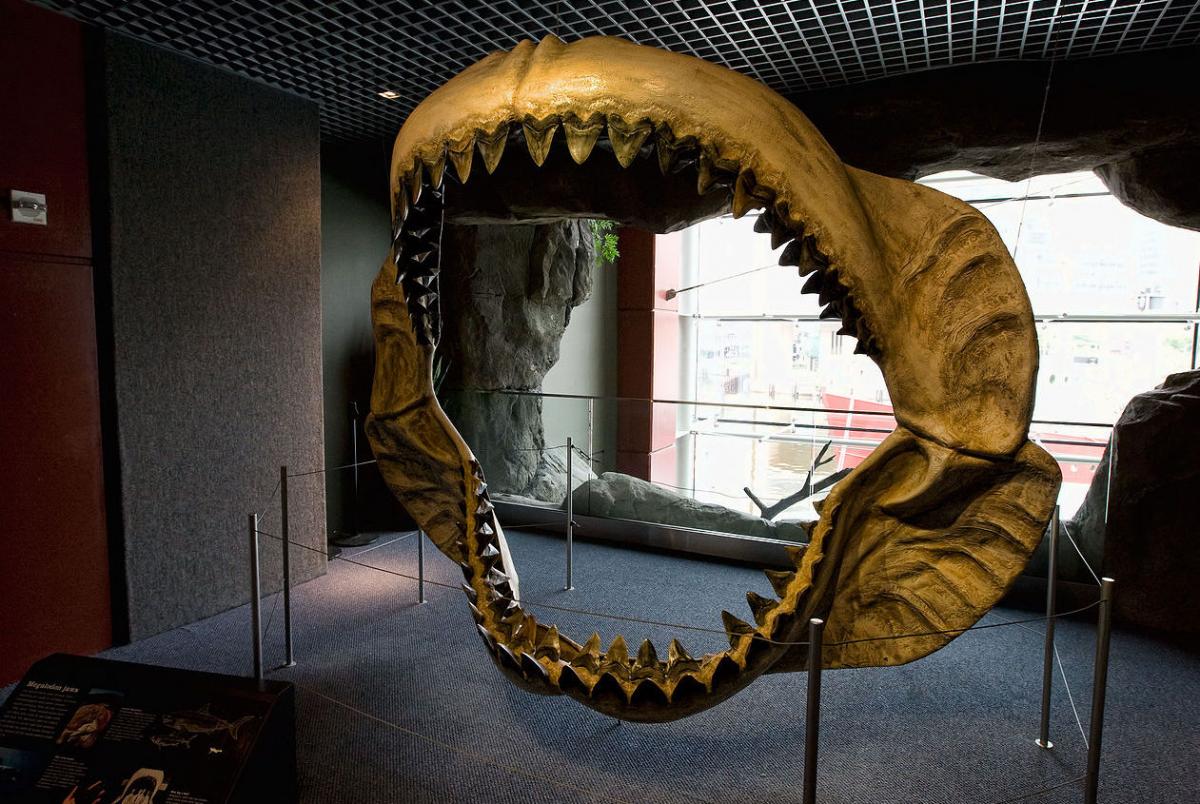Y: The largest shark that ever lived is called Otodus megalodon. And Don, its teeth were as big as a human hand. The oldest fossil evidence dates from twenty million years ago, and it became extinct just three-and-a-half million years ago.
D: Yes, Yaël, but there’s a problem. Paleontologists have no way to tell directly how big Megalodon was. Many animals’ bones are coated with the hard mineral calcium phosphate. But sharks and their relatives have skeletons that are made up entirely of soft cartilage like our nose and ears. This doesn’t fossilize well. The hardest part of a shark’s body is its teeth, and that’s virtually the only part of Megalodon that has ever been found. Even the name means “big tooth”. There are no complete skeletons to measure.
Y: But in 2020 a team of researchers in Europe published an indirect estimate of Megalodon’s size. They did it based on the proportions of modern sharks they identified as Megalodon’s closest living relatives. Earlier studies compared Megalodon to just one of its modern relatives: the great white shark. This study compared the body proportions of five different related species of modern sharks. The researchers found out something interesting about the way these sharks grow up into adults. As they mature, their body proportions stay the same as they get bigger. That’s what made them confident about extrapolating upward to the size of Megalodon.
D: Well, okay, I guess it’s the best estimate we’ve got.
Y: The researchers estimated that Megalodon’s head was fifteen feet long, and its whole body was about fifty feet long. Its dorsal fin was over five feet tall—as tall as a human.









